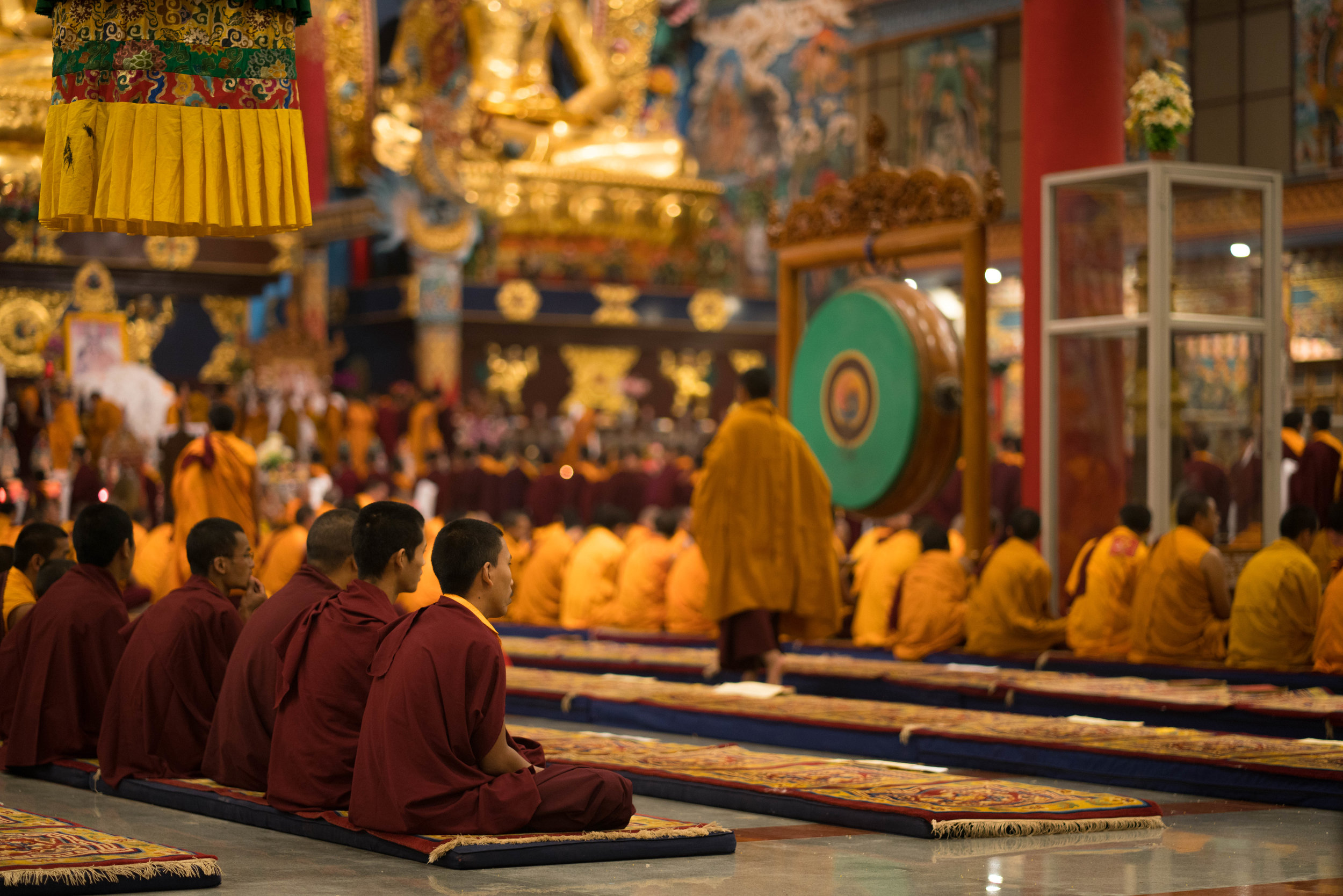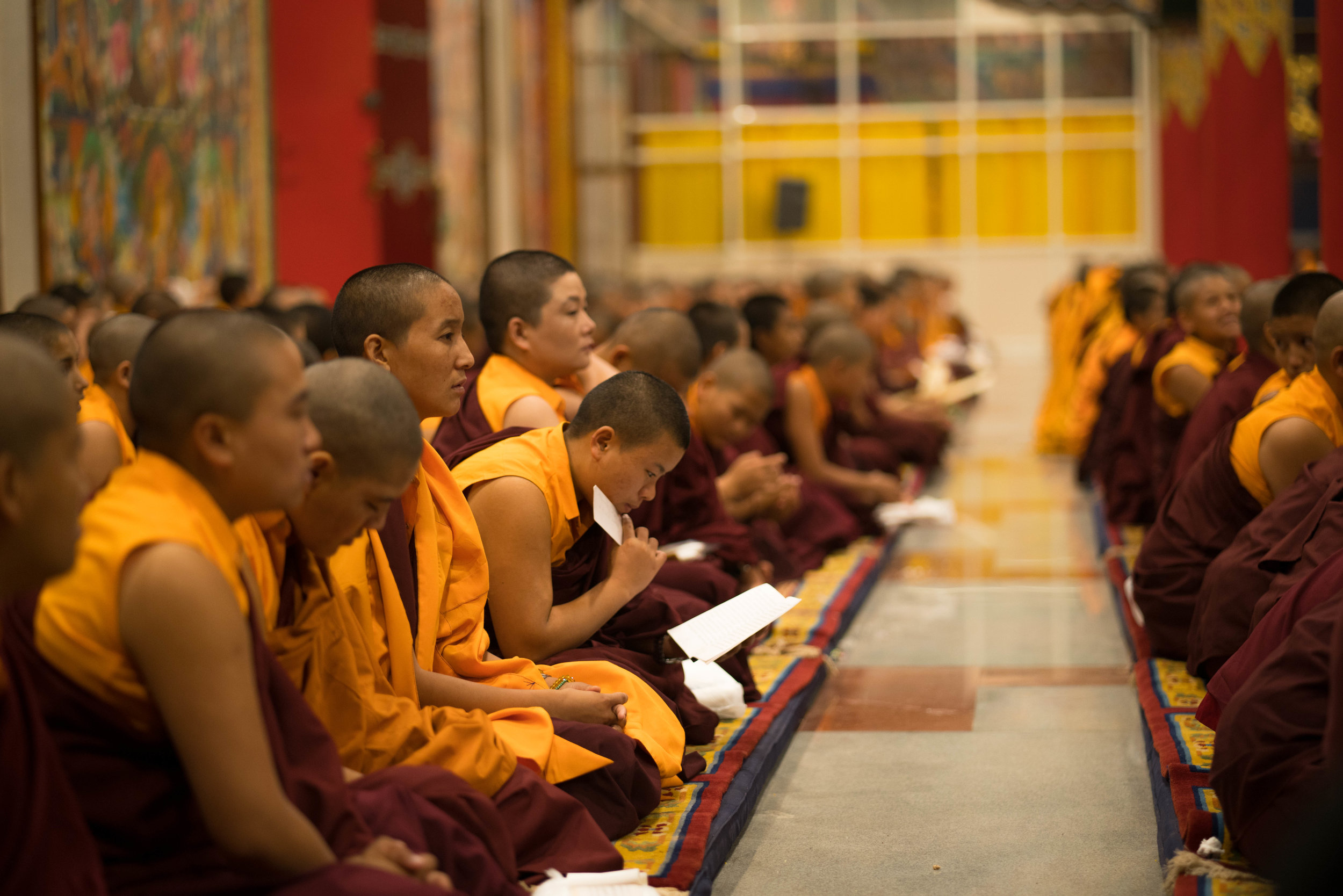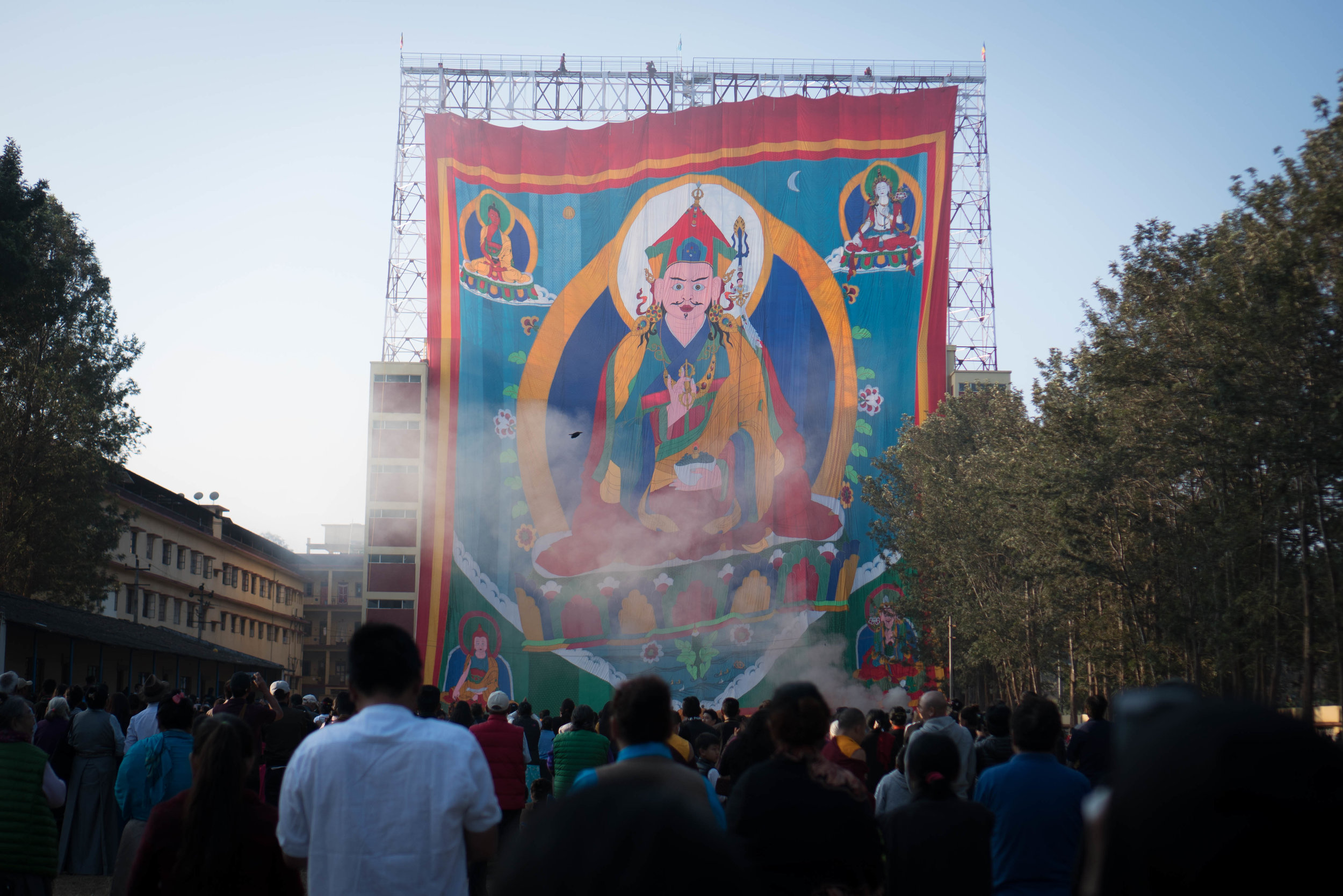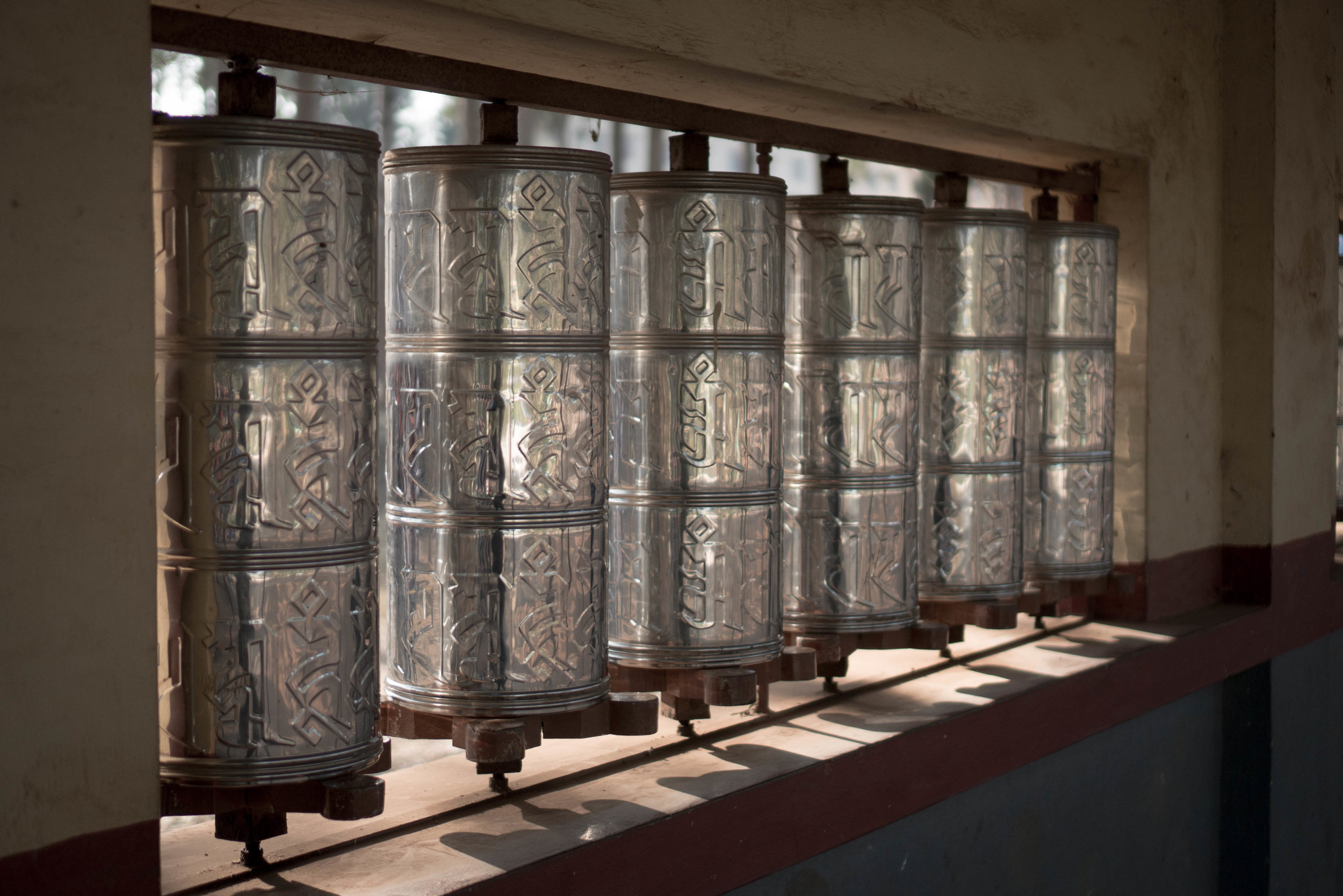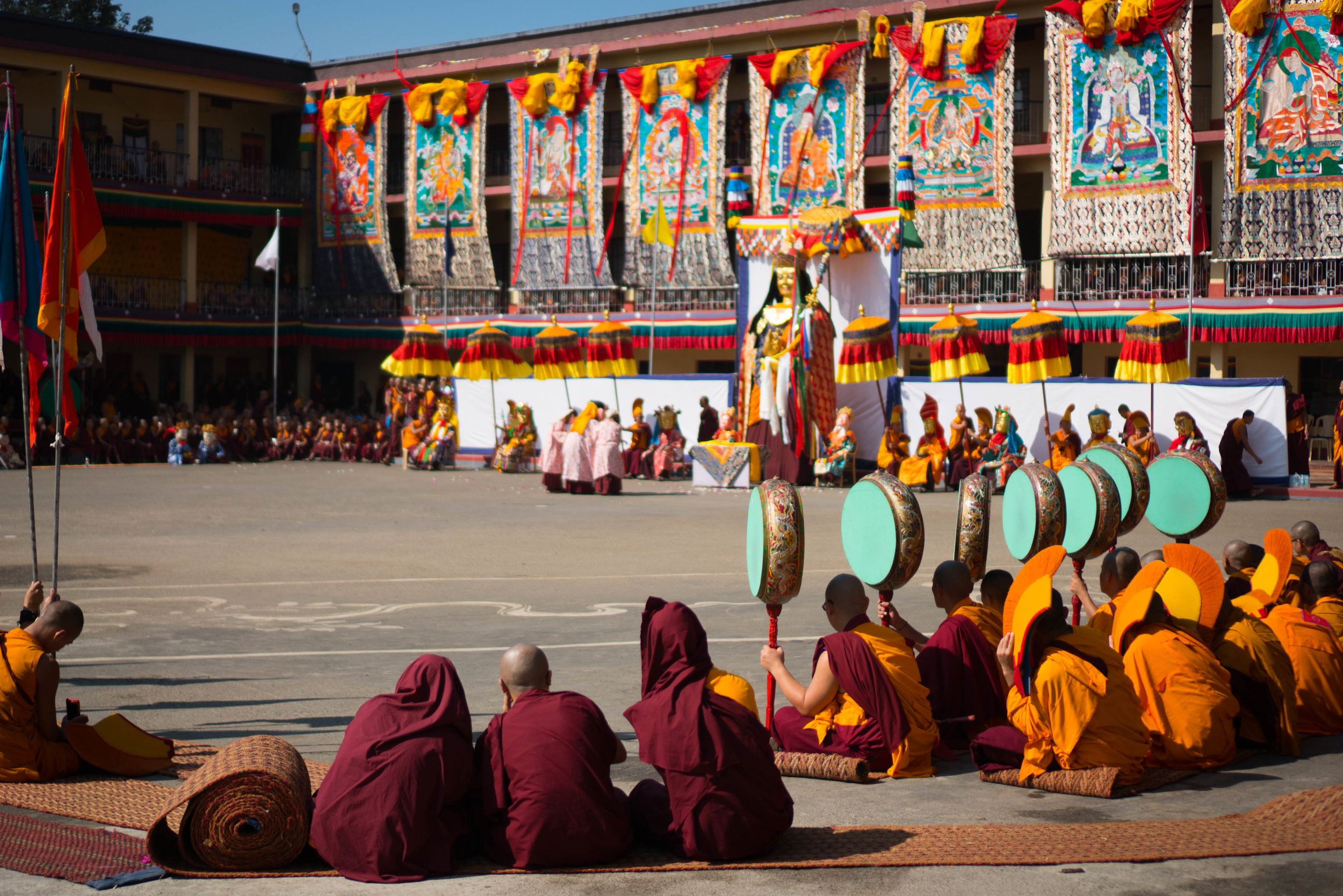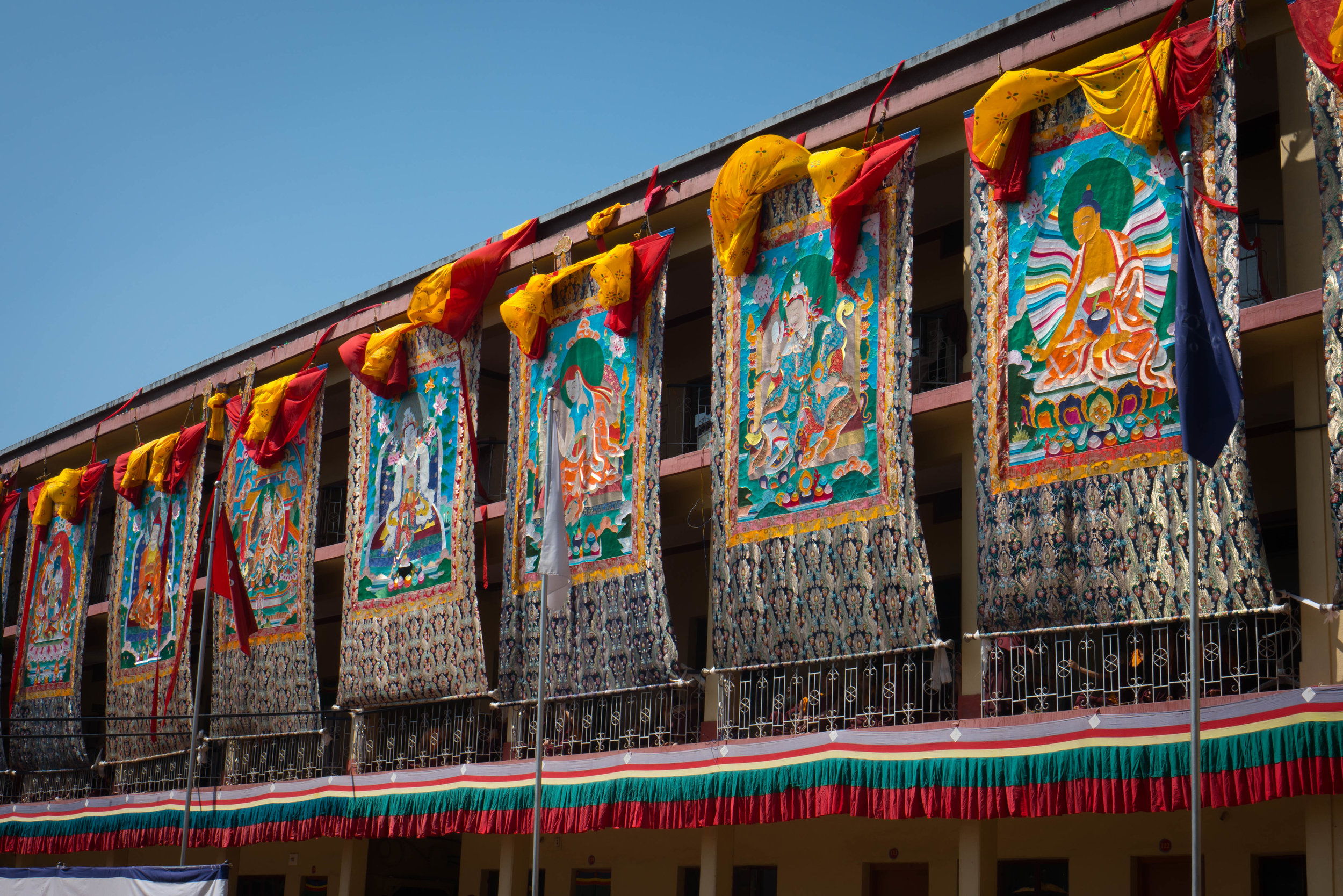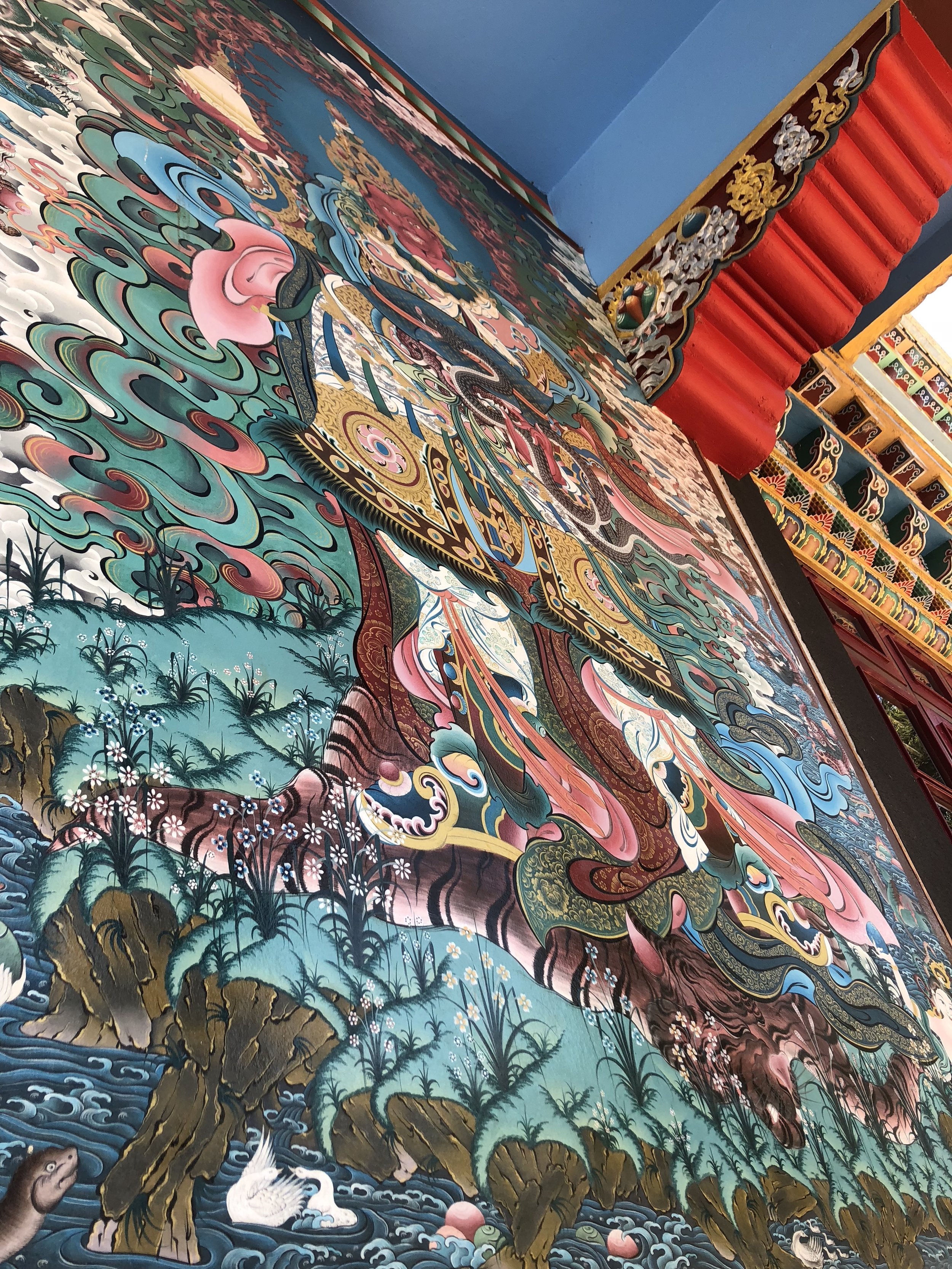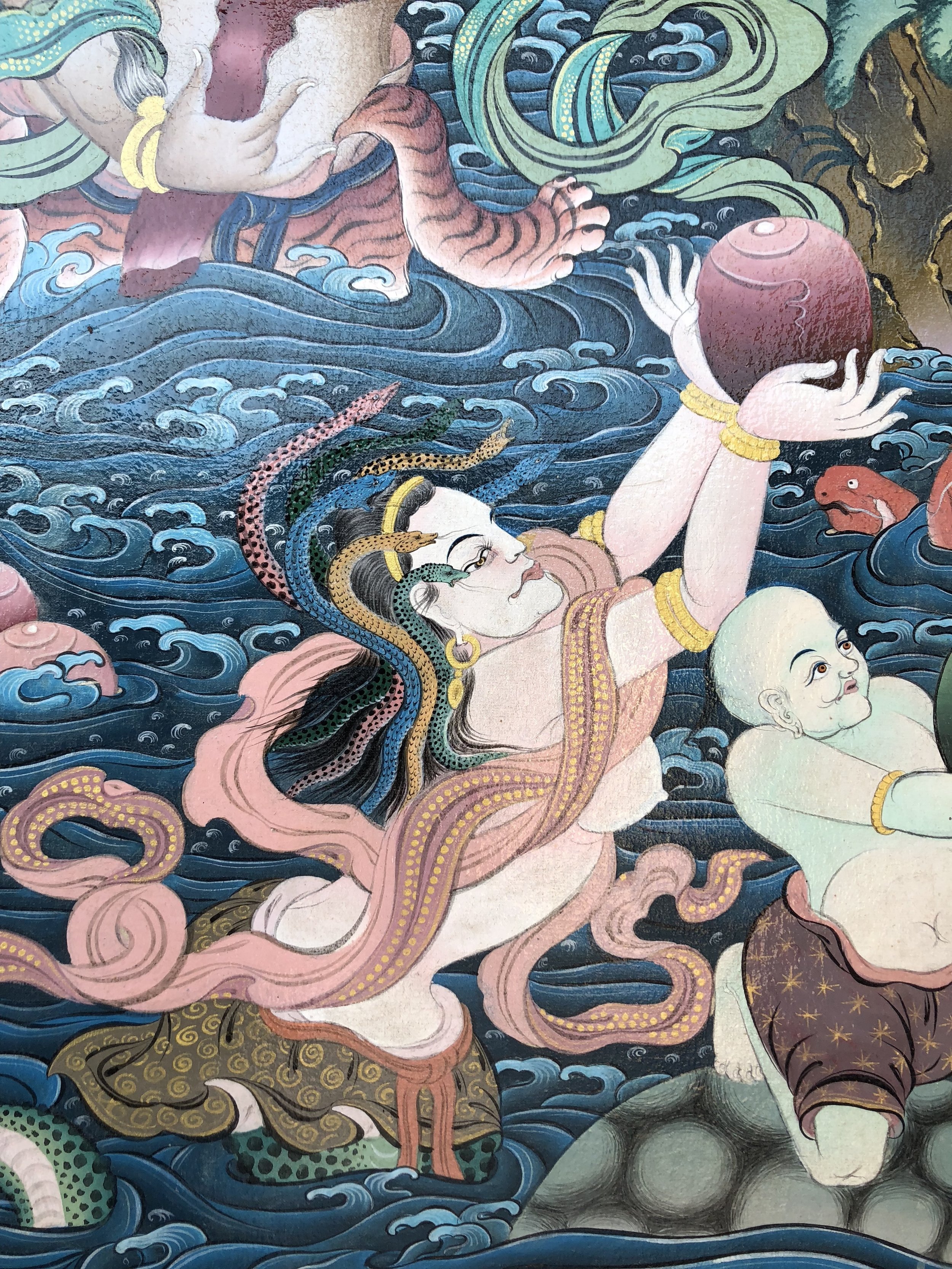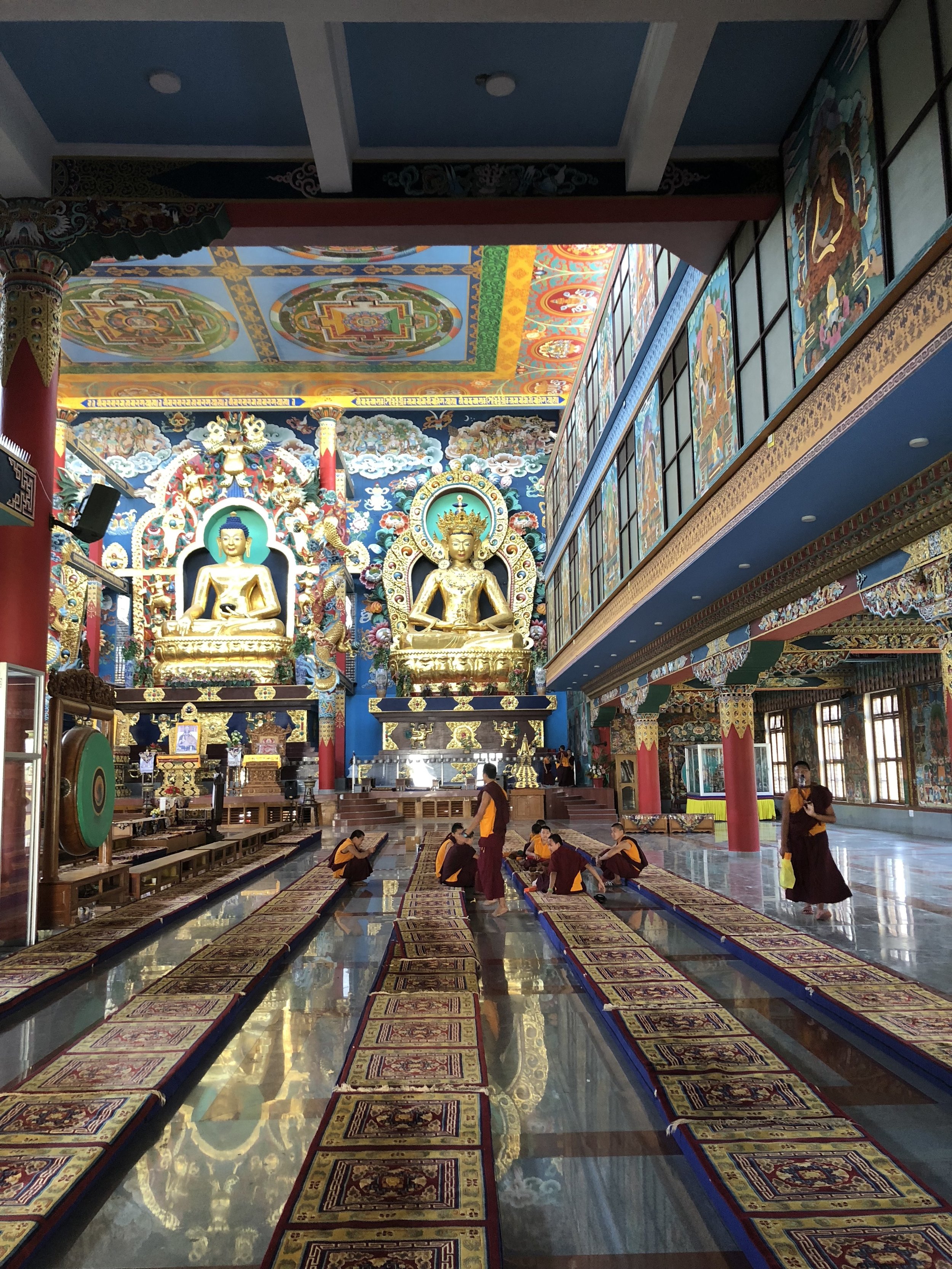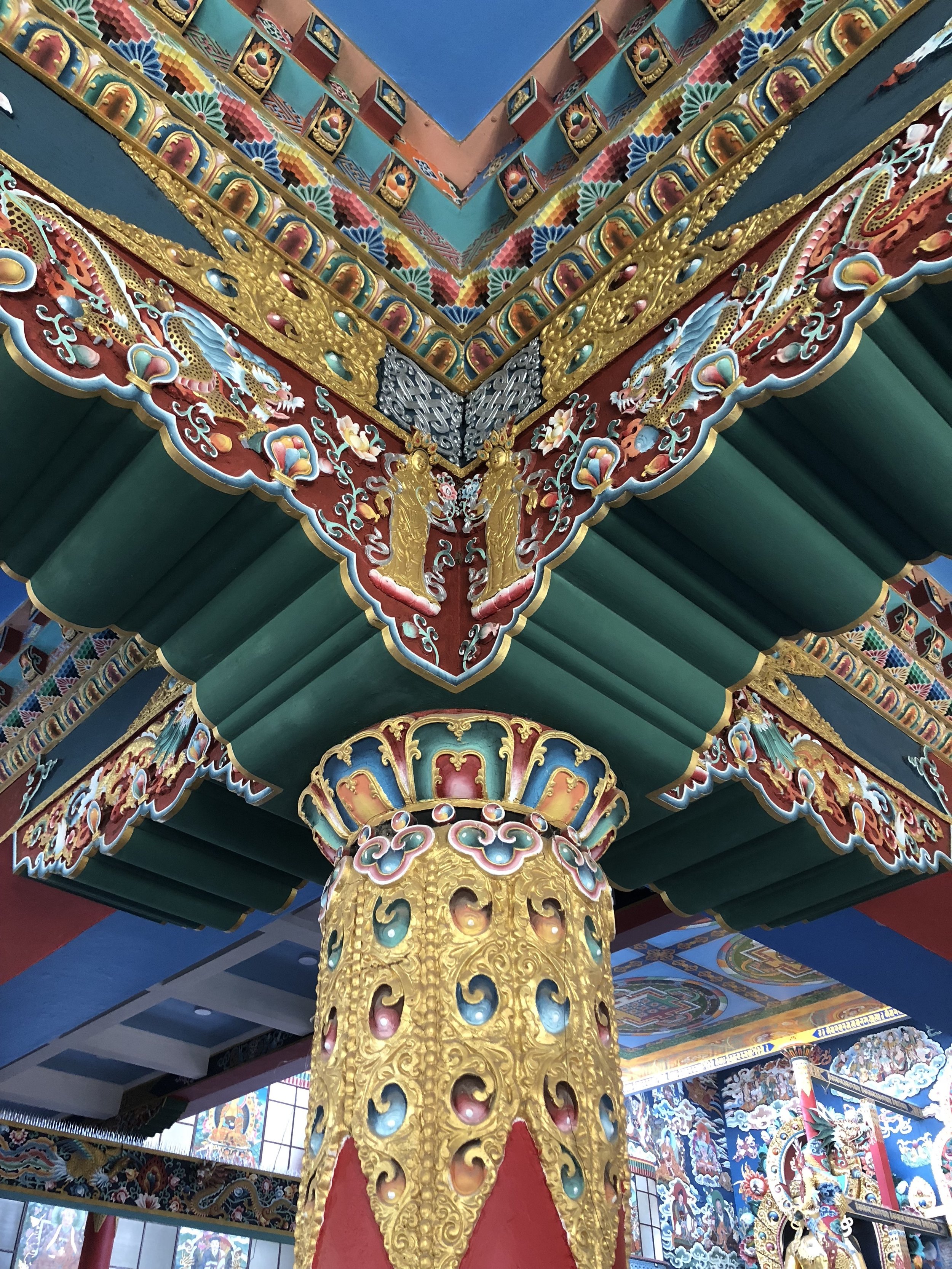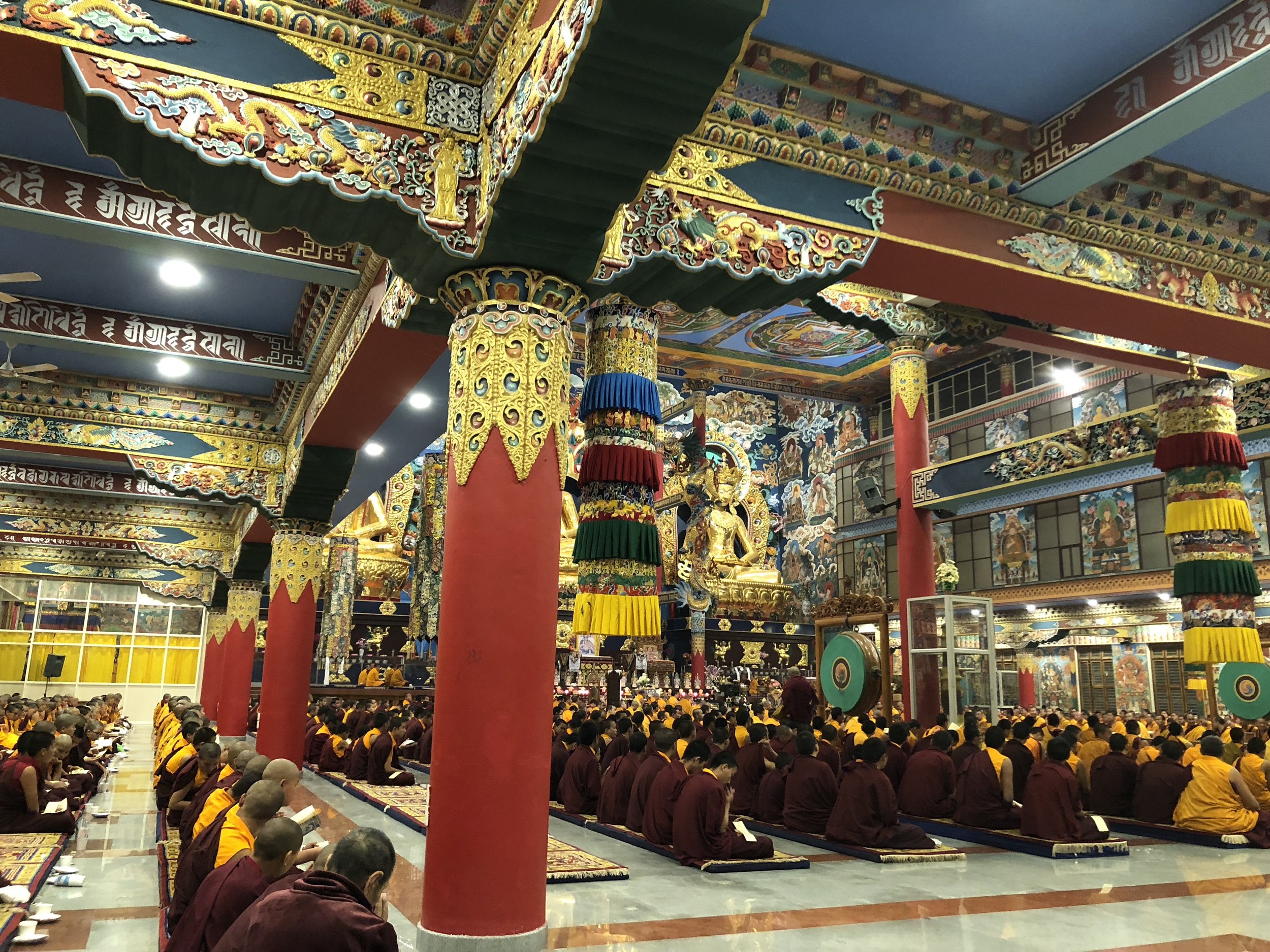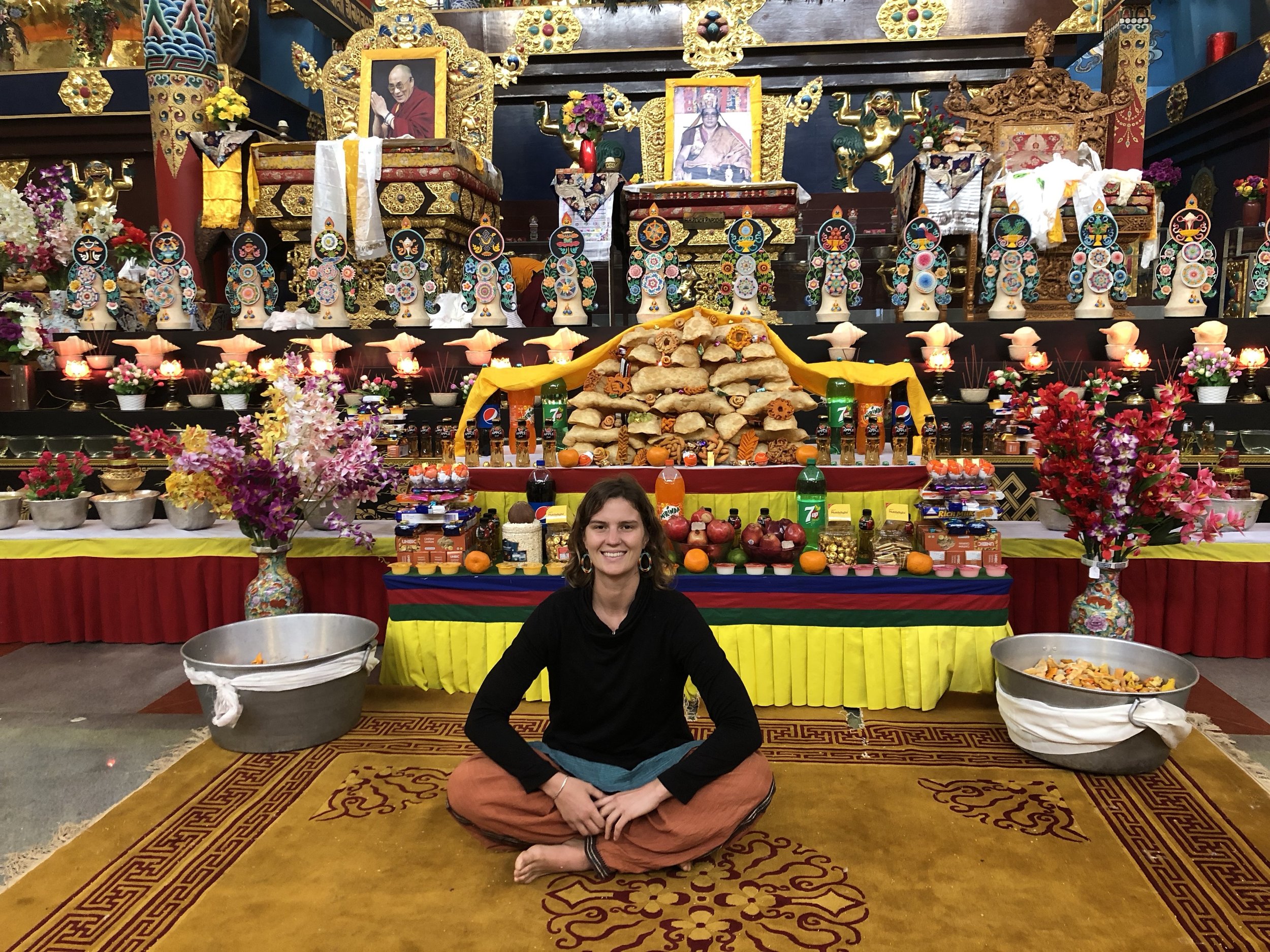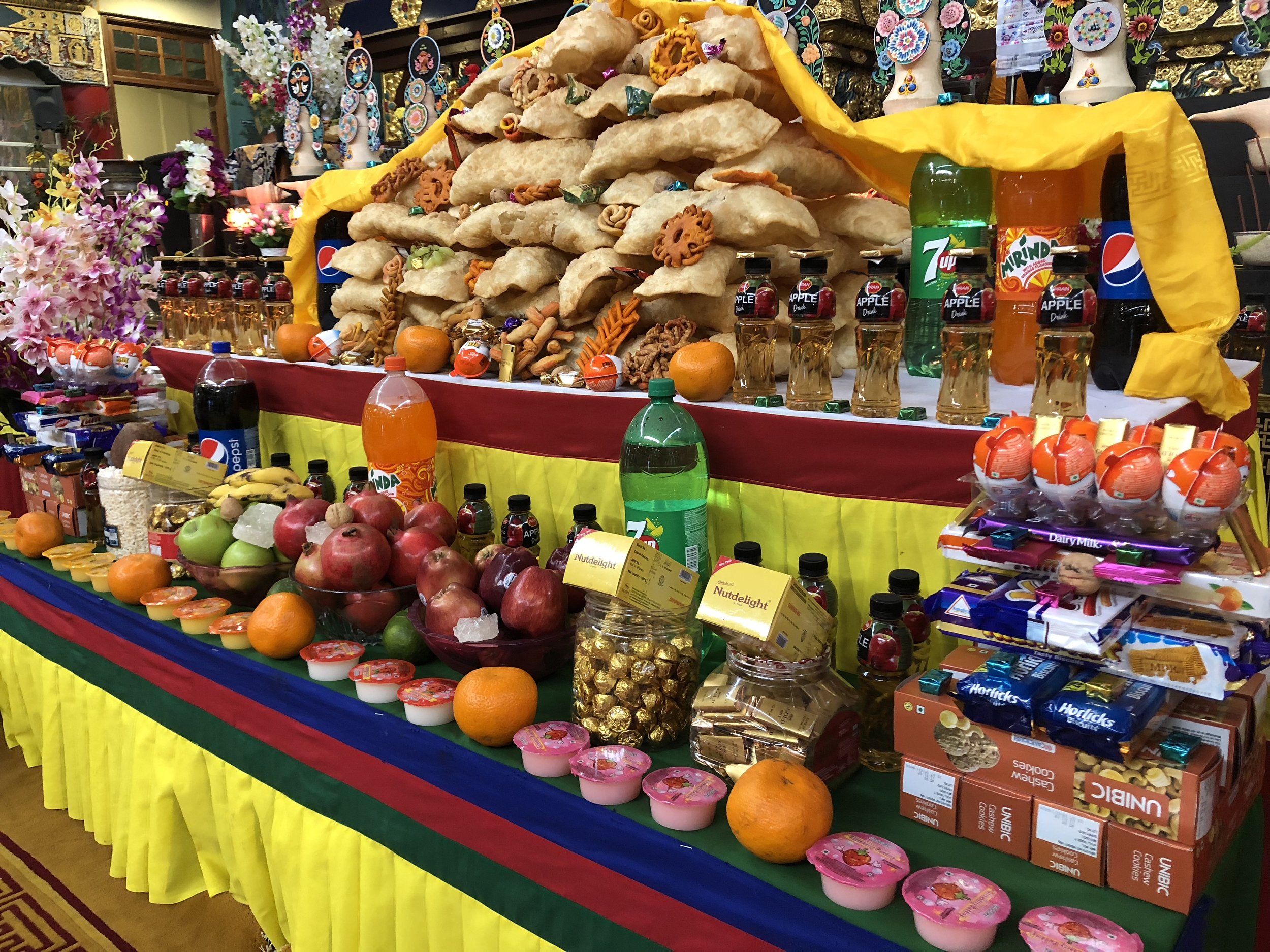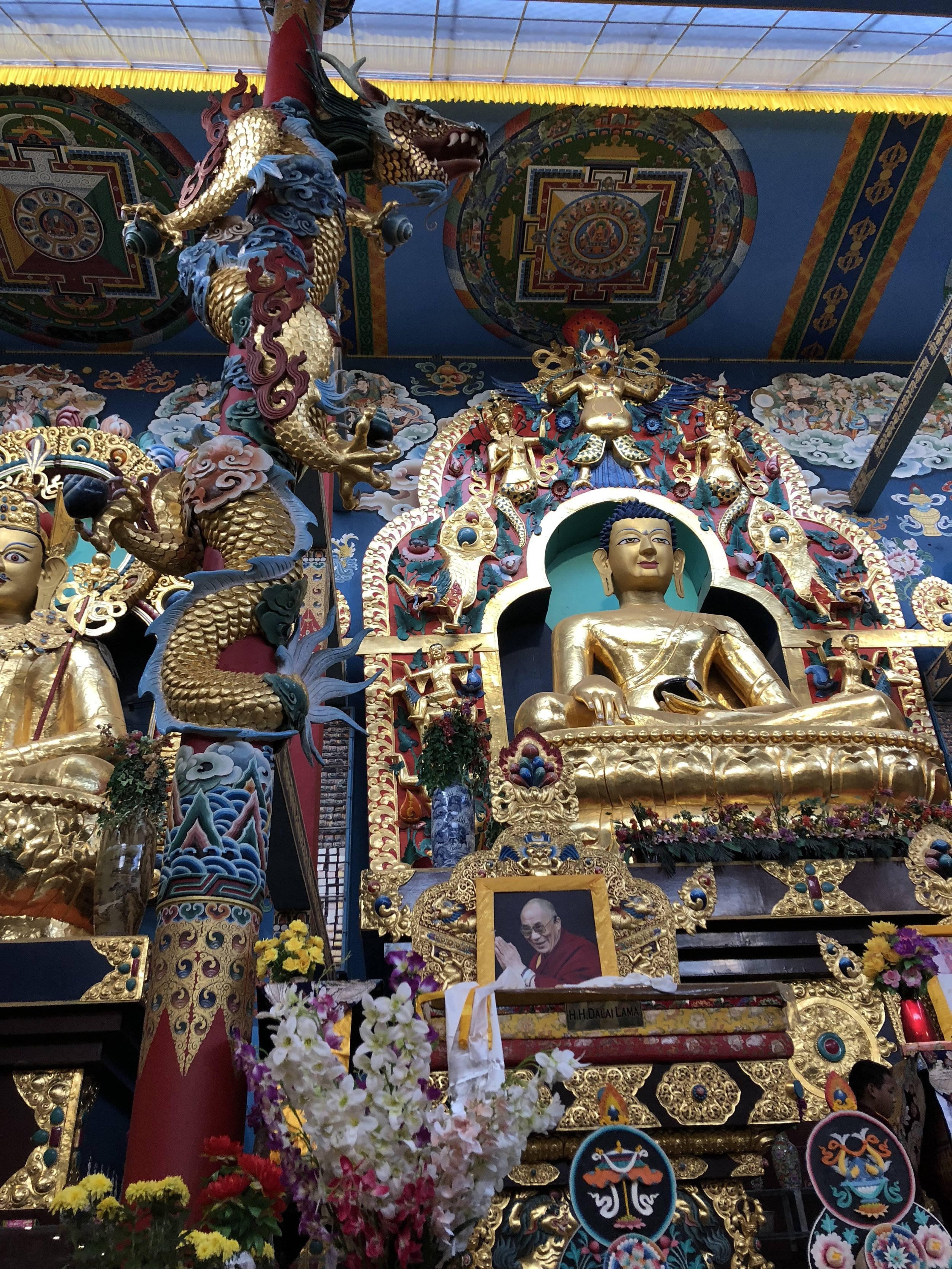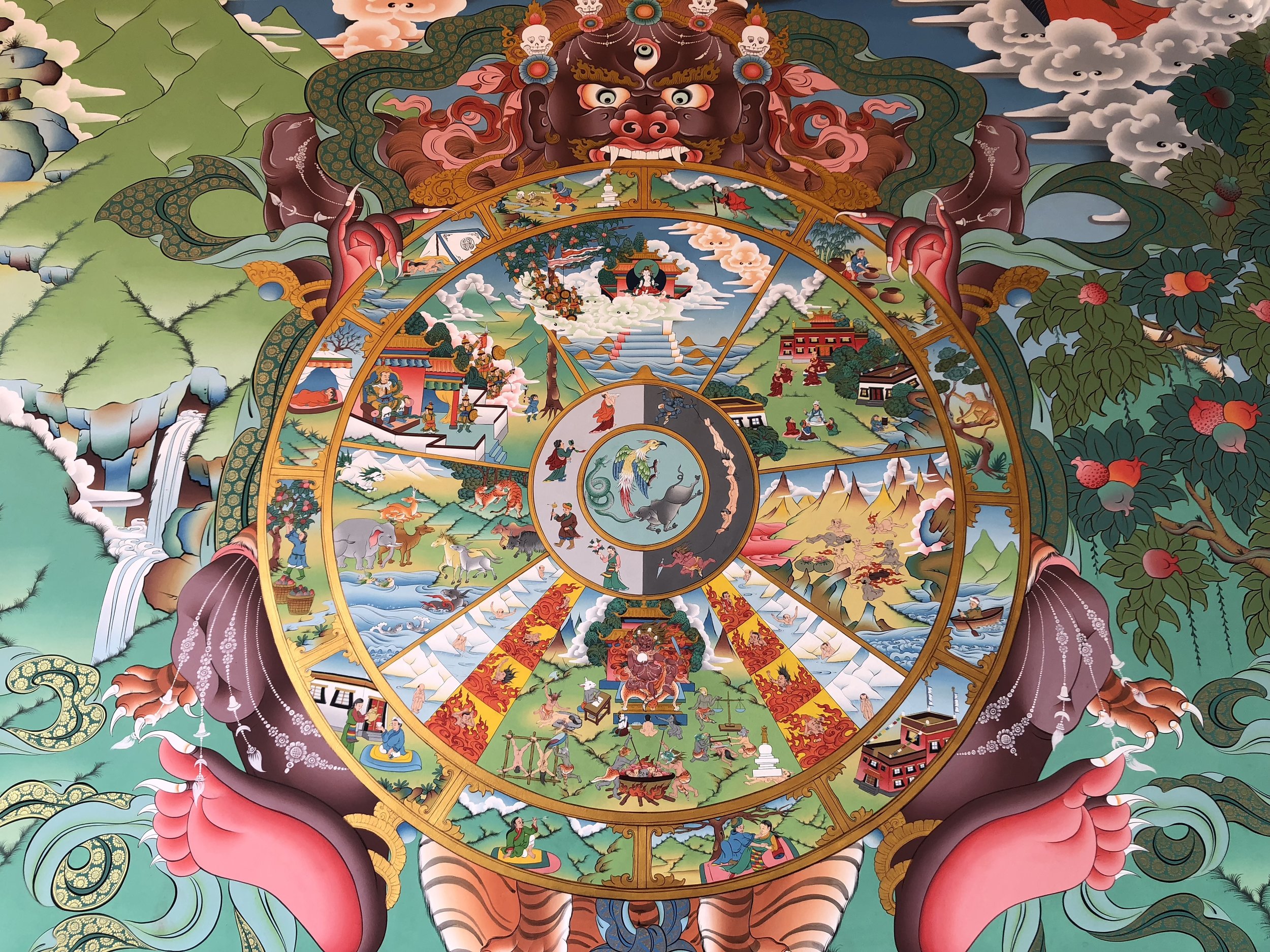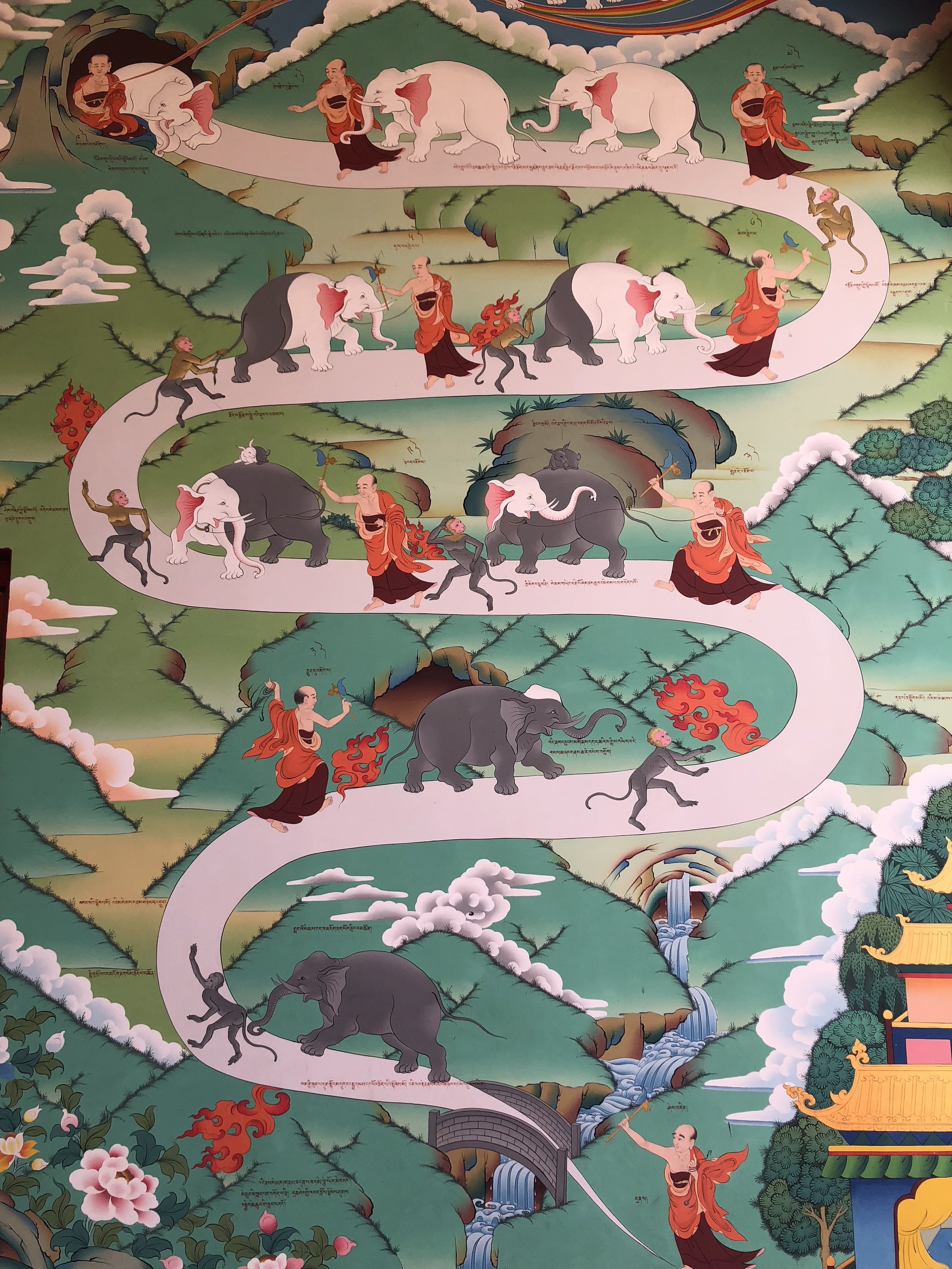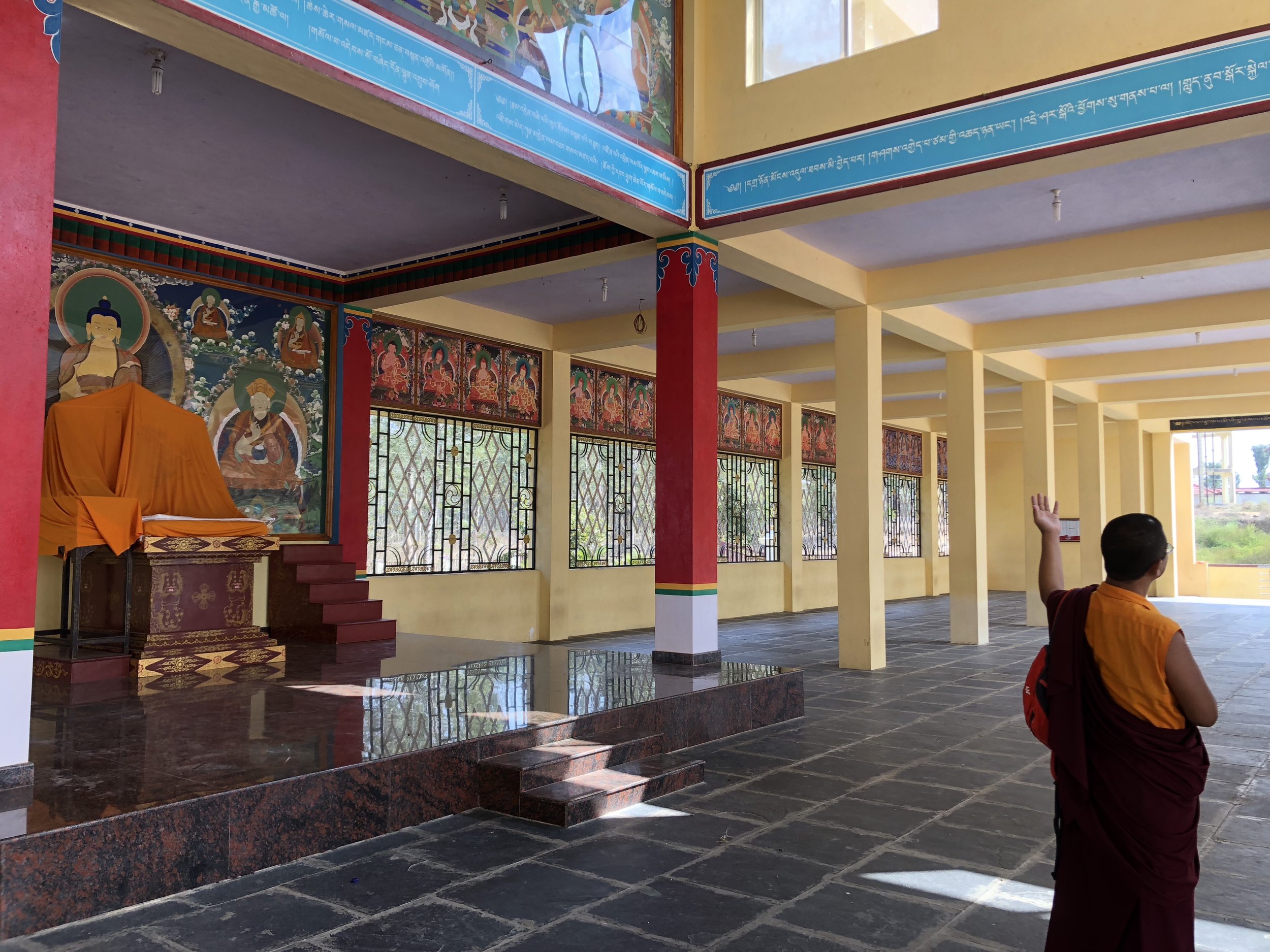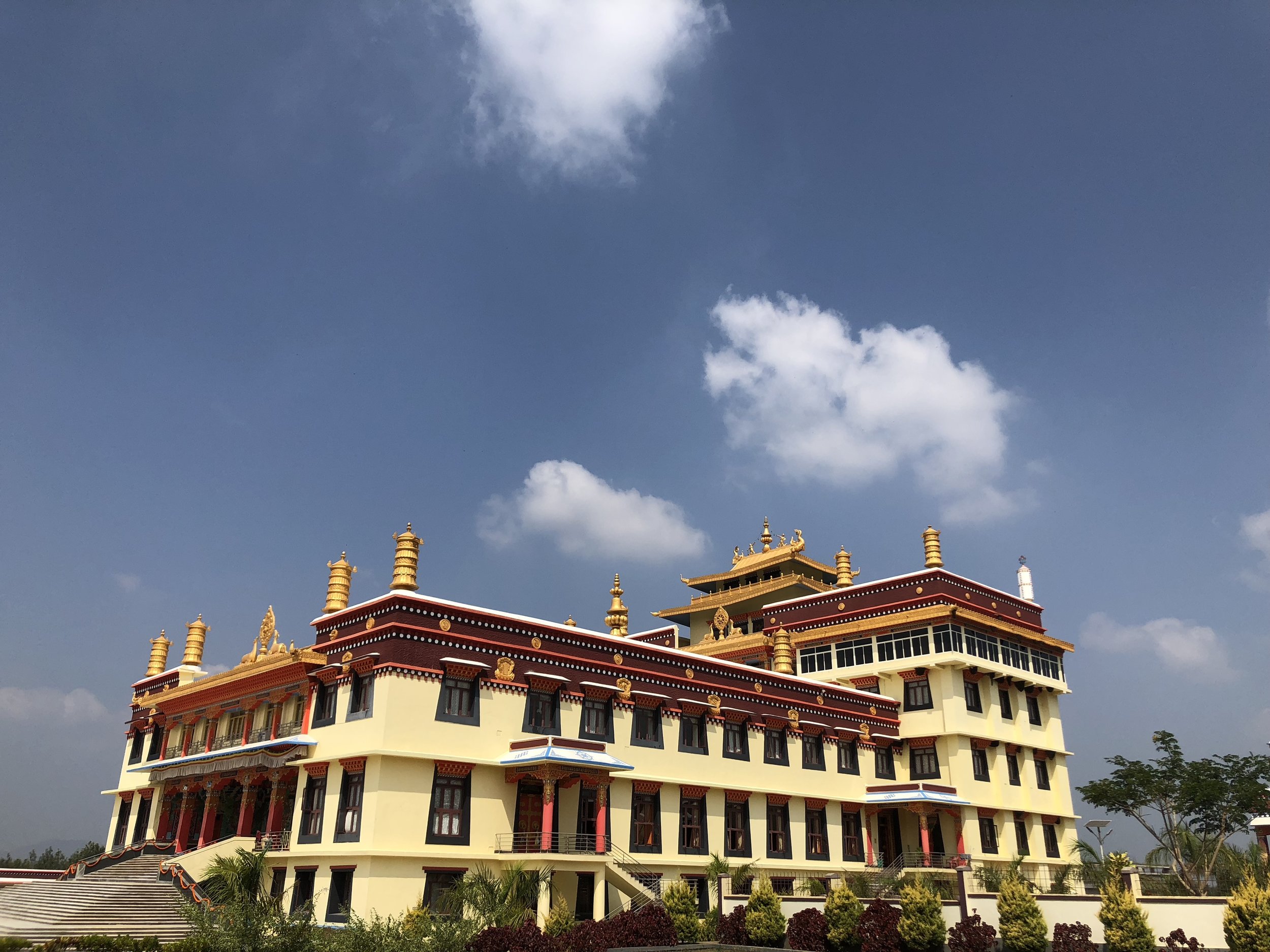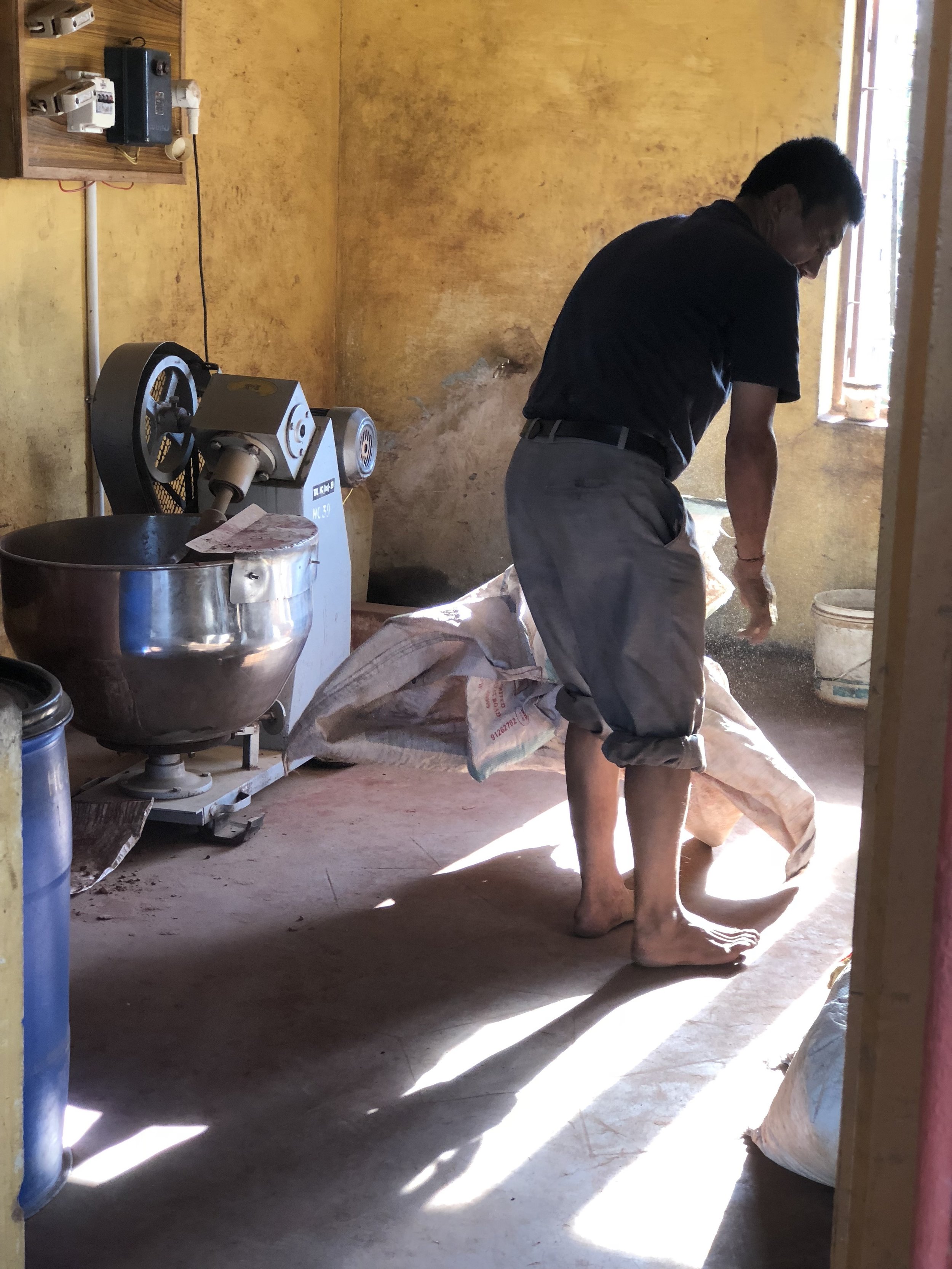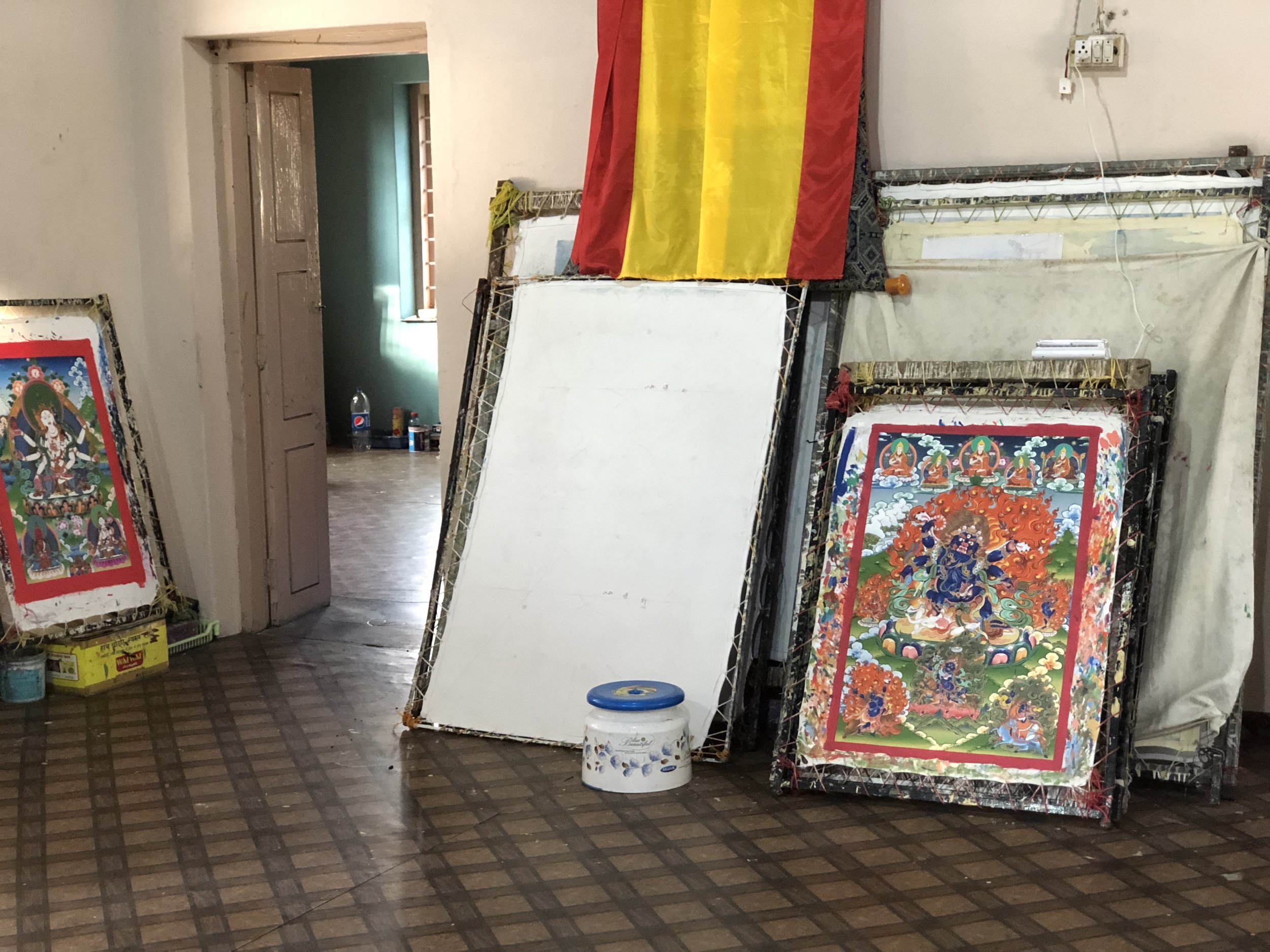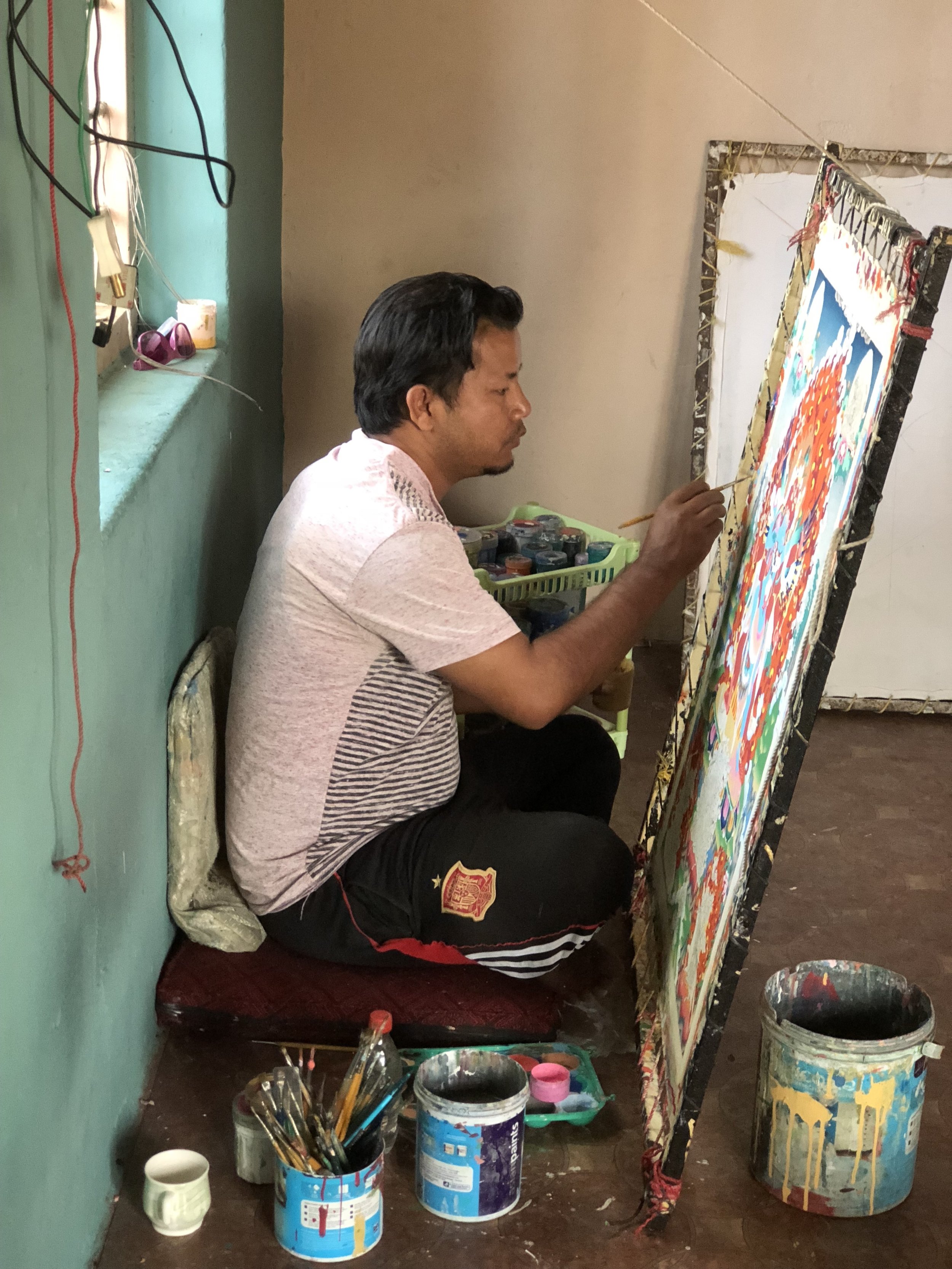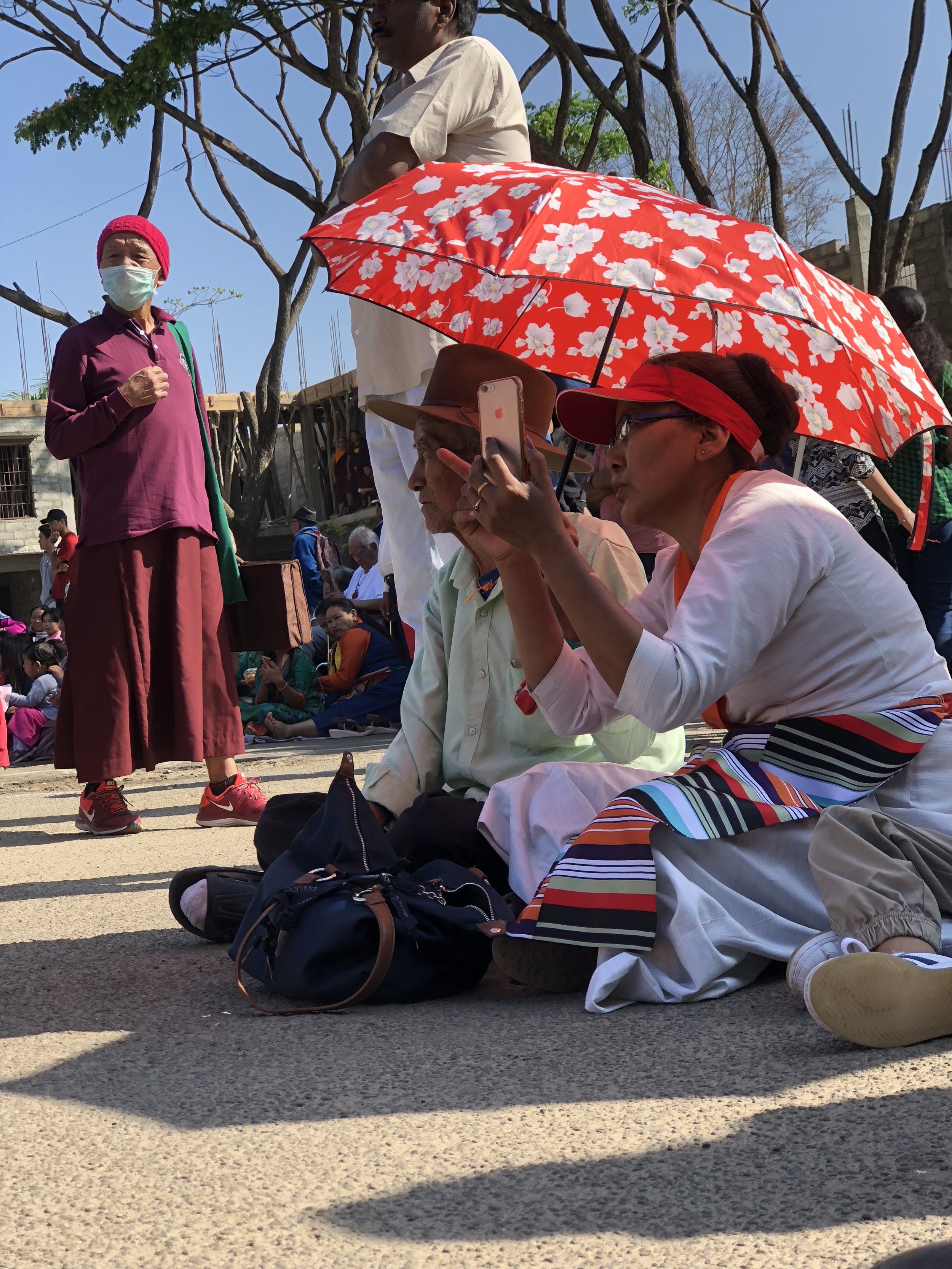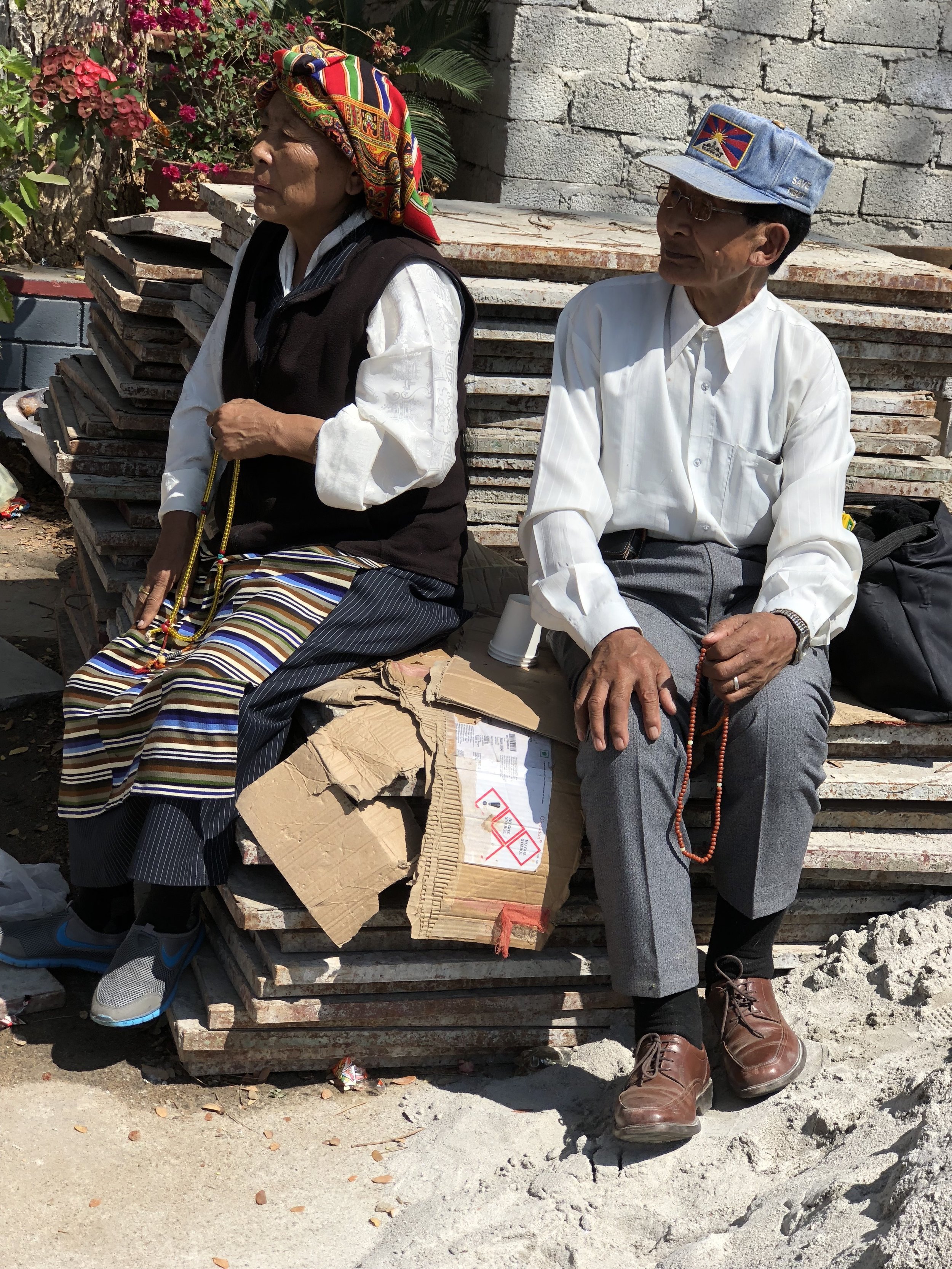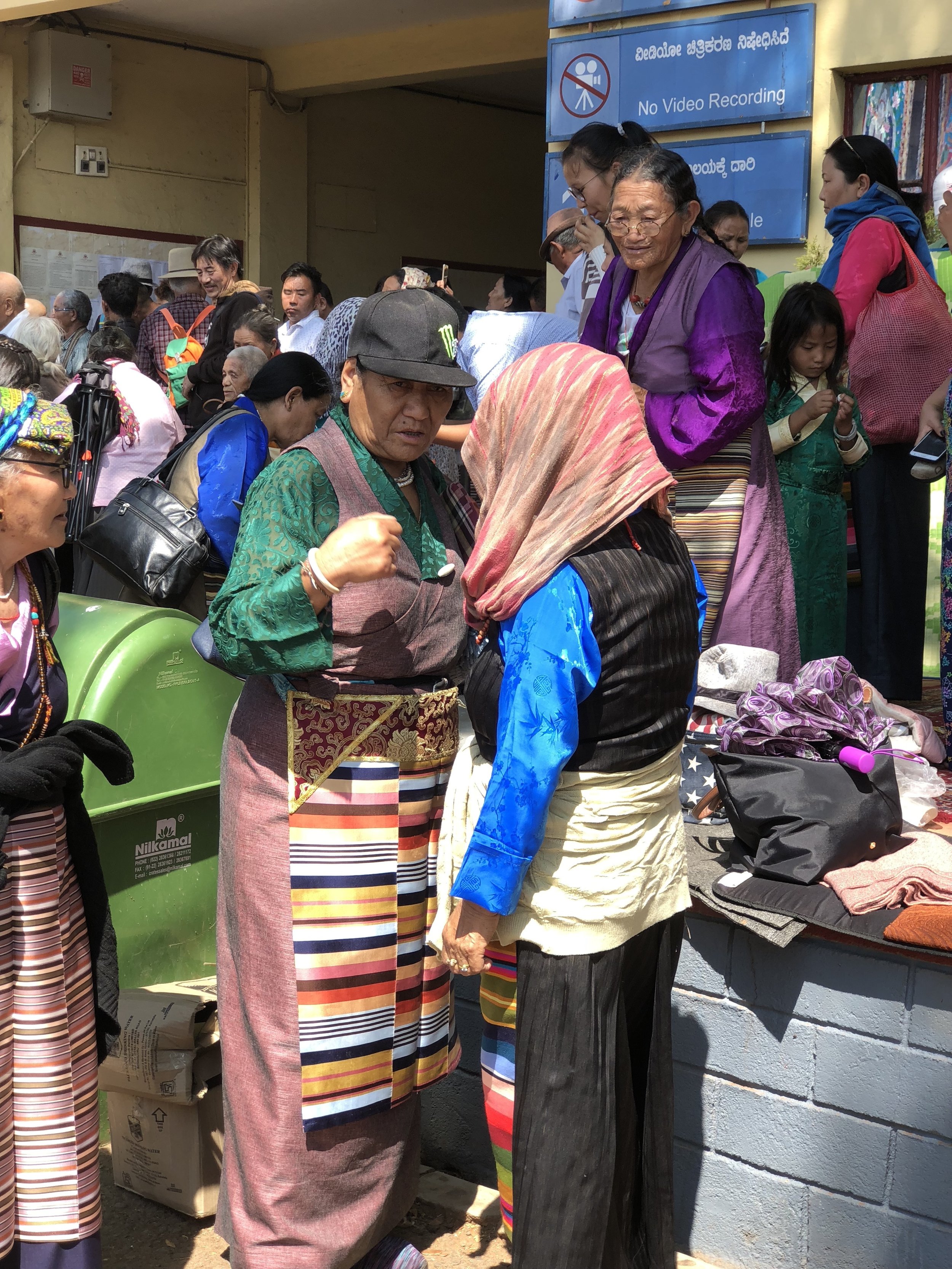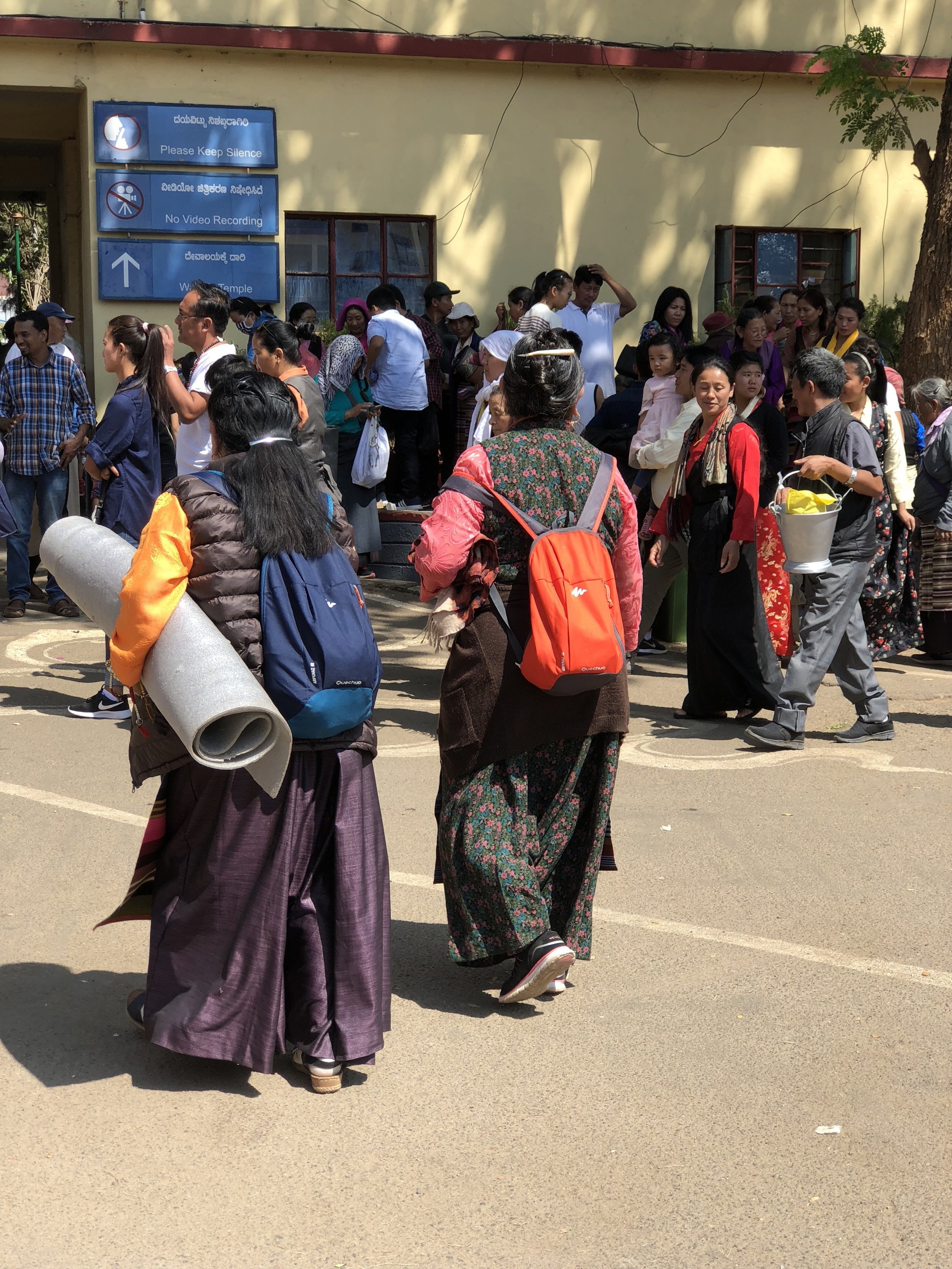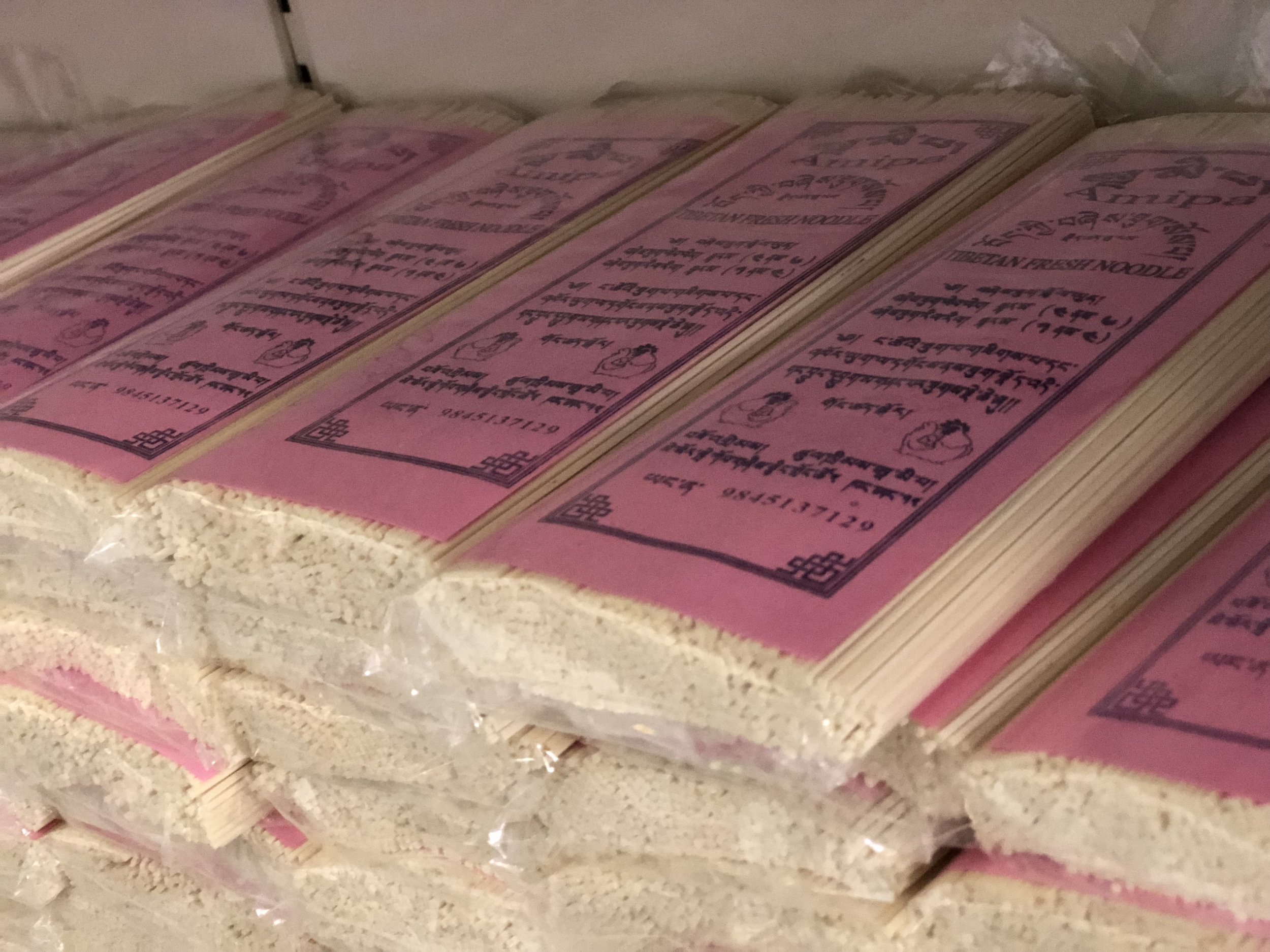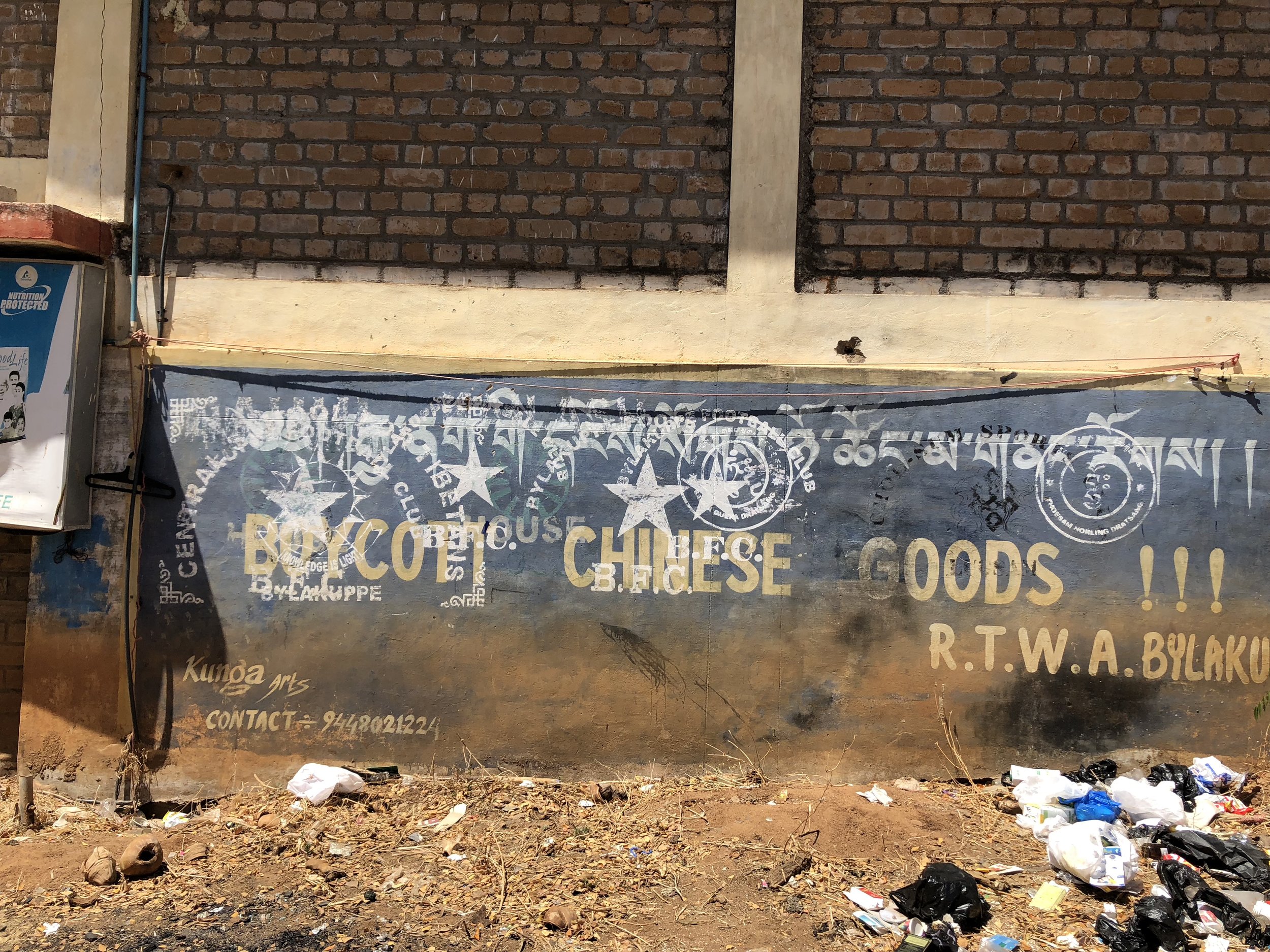The Golden Temple (Namdroling Monastery) is in the same lineage of and guides our Namdroling Tibetan Buddhist center in Bozeman, Montana. Some teachers we studied with in Montana attended Namdroling in India and still reside here. For us, it was a special moment to connect the dots, meet folks associated with the Bozeman center, and understand a little more about the context in which Tibetans maintain their cultural heritage in exile.
Following in the footsteps of the 14th Dalai Lama more than 150,000 Tibetan refugees have fled to India during the past 50 years fleeing ethnic and religious persecution from the People’s Liberation Army of China - many trekking through the treacherous Himalayas to escape.
Creating the Golden Temple, and all the surrounding Tibetan Buddhist institutions and monasteries in the area for that matter, were an extreme labor of love and dedication. In 1960, Karnataka allotted nearly 3,000 acres of jungle to create the a Tibetan exile settlement, in addition to the one in Dharamsala in Himachal Pradesh in Northern India where His Holiness the Dalai Lama resides. Penor Rinpoche (the teacher that founded Namdroling) and other Tibetan refugees at that time, came to India with nothing, yet they managed to adjust and thrive in their new situation. Many people died of heat exhaustion and food-borne illness associated with the new environment (high desert mountains to humid jungle!), while initial struggles of the Golden Temple’s construction were rampaging elephants and other tropical dangers. Today, Namdroling Monastery has a sangha of over 5,000 monks and nuns, a junior college, religious college, PhD program and hospital.
Nearly 70,000 Tibetan live in settlements (referred to as Camps 1 through 4) and since its creation several other prestigious Tibetan Buddhist institutions have been erected, creating a space for the displaced Tibetan to preserve their culture even in exile. Generations of young Tibetans only know the settlement as home, begging the question: what does it mean to be Tibetan in 2018? How much does our environment dictate the way our culture evolves? Fortunately the Indian government has given the Tibetans autonomy in their settlements to make decisions in the interest of preserving their culture and ways of life. Many still have hope that one day they will return to their homeland but in the meantime this place serves as a reminder of their continued resiliency and strong sense of collective identity.

